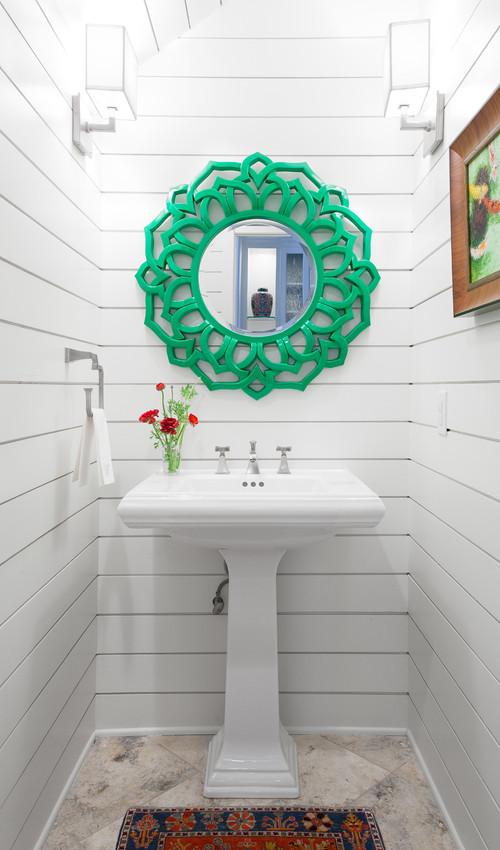What is the difference between Warranted and Non- Warranted items?
There's been a lot of debate recently over covered items with seller warranties. We found this great article by Attorney Michelle Lind about the breakdown on seller warranties, what is covered and FAQ's .

Seller Warranties in the AAR Residential Resale Real Estate Purchase Contract
By AAR Attorney Michelle Lind
Questions have recently arisen regarding the Seller Warranties Section (5a) of the AAR Residential Resale Real Estate Purchase Contract (02/11) (contract). This article will attempt to answer some of the most frequently asked questions about the seller warranties provision in the contract.
Background
The Seller Warranties Section was added to the contract almost 20 years ago and has remained substantially unchanged since that time. In July 1994, the seller warranties provision of the contract stated: “Seller warrants and shall maintain and repair the premises so that at the earlier of possession or close of escrow: (1) the premises shall be in substantially the same condition as on the effective date of this contract, (2) the roof has no known leaks, (3) all heating, cooling, mechanical, plumbing and electrical systems and built-in appliances will be in working condition, and (4) if the premises has a swimming pool and/or spa, the motors, filter systems, and heaters, if so equipped, will be in working condition . . .” The roof warranty was eliminated from the contract in 1996.
A requirement that the buyer provide the seller notice of non-working warranted items during the inspection period was added to the contract in 1996. The purpose of this requirement was to allow the seller to evaluate the cost of requested inspection period repairs along with the cost of any necessary warranted item repairs.
In 2005, a section was added to the AAR Buyer Inspection Notice and Seller Response (BINSR) form to address the problem of buyers combining the notice of non-working warranted items along with requested repairs of inspection period items disapproved.
Seller Warranties Section in the Current Contract
The Seller Warranties Section of the current contract states: “The seller warrants and is obligated to maintain and repair the premises so that, at the earlier of possession or close of escrow:
(i) all heating, cooling, mechanical, plumbing and electrical systems (including swimming pool and/or spa, motors, filter systems, cleaning systems and heaters, if any), free-standing range/oven, and built-in appliances will be in working condition; (ii) all other agreed upon repairs and corrections will be completed pursuant to Section 6j; (iii) the premises, including all additional existing personal property included in the sale, will be in substantially the same condition as on the date of contract acceptance; and (iv) all personal property not included in the sale and all debris will be removed from the premises.”
Pursuant to Section 6k of the contract, the buyer is obligated to provide the seller with notice of any non-working warranted item(s) of which the buyer becomes aware during the inspection period or the seller’s warranty for that item(s) will be waived. The contract makes it clear that the buyer’s notice does not affect the seller’s obligation to maintain or repair the warranted item(s). The contract states that: “Delivery of such notice shall not affect the seller’s obligation to maintain or repair the warranted item(s).”
Frequently Asked Questions
Question: Why does the contract include seller warranties?
Answer: There are a variety of reasons why seller warranties have been included in the AAR contract for so many years. One reason is to give a buyer some assurance that the major property systems (heating, cooling, mechanical, plumbing and electrical) are functional. As a result, the agreed upon price includes working major property systems. Therefore, the seller warranties may reduce price negotiations or price adjustments for property systems that virtually every buyer will require. Lender requirements are another consideration. Some lenders require that the property systems function as a condition of approving the buyer’s loan.
Question: Why aren’t all “heating, cooling, mechanical, plumbing and electrical” system components specifically listed in the contract?
Answer: The contract revision workgroups have determined that it would be extremely difficult, if not impossible, to describe and create a “laundry list” of every type of system and related components that may be in a home. A system is defined by the Board of Technical Registration Standards of Professional Practice for Home Inspectors as a “combination of interacting or interdependent components assembled to carry out one or more functions.” In other words, all the parts required to operate. For example, a heating system may have a number of components, such as: operating controls, safety controls, chimneys, flues and vents, fans, pumps, ducts, dampers, fan coil units, and convectors. See: www.btr.state.az.us/regulations/home_inspectors.asp#System
Question: What constitutes “working condition”?
Answer: “Working condition” is generally defined as functioning as intended or operational. However, the terms does not equate to “new”, “unused” or “perfect” condition. The contract revision workgroups have considered alternatives to the term “working condition,” but have not agreed upon a term or phrase that that would eliminate all ambiguity.
Question: What should the seller do if the seller does not want to warrant the listed items to be in working condition?
Answer: If the seller does not want to warrant any of the listed items, one option is to utilize the AAR “AS IS” Addendum. Pursuant to the AAR “AS IS” Addendum, the buyer waives the seller warranties. Therefore, the seller has no obligation to make any repairs to ensure that heating, cooling, mechanical, plumbing, and electrical systems and other listed items are in working condition. However, the seller is obligated to maintain and repair the premises so that the premises is in substantially the same condition as on the date of contract acceptance, and all personal property not included in the sale and all debris will be removed. See, www.aaronline.com/2012/12/the-great-as-is-debate.
If the seller does not want to warrant a specific item, the seller has the option to specifically exclude the item in the Additional Terms and Conditions Section of the contract. For example, if the property has a non-functioning evaporative cooler, in addition to the HVAC, that the seller does not intend to warrant or repair, the seller should specifically exclude the evaporative cooler from the warranted items in the contract.
Question: Must a licensed contractor be utilized to make all repairs?
Answer: No, unless required by law or the buyer has written this requirement into the contract under Additional Terms and Conditions. Generally, a contractor’s license is required by statute for work that exceeds $1,000 in value. Thus, to the extent that any repairs exceed $1,000, the seller should hire a licensed contractor to make those repairs. See A.R.S. §32-1112(4) for details on the statutory exemptions from contractor licensure for work that does not exceed $1,000.
Question: Why doesn’t the contract require a licensed contractor for all repairs?
Answer: The contract revision workgroups have considered, but ultimately decided against, requiring a licensed contractor for all repairs. Many common minor repairs (leaking faucets, small drywall repairs, paint touch-up, cabinet/door adjustments, etc.) can be adequately performed by the homeowner or a handyman in a more cost-effective manner. However, agreed-upon repairs must be made in a workmanlike manner.
Question: If the buyer gives notice of a non-working warranted item, is the seller entitled to refuse to repair the item?
Answer: No. When the buyer and seller enter into the contract, the seller agrees that the warranted items will be in working condition at close of escrow. The buyer’s notice that one of these items is not working does not open the issue to negotiation or change the seller’s obligation to repair the item and deliver it in working condition at close of escrow.
Question: What happens if the buyer discovers a non-working warranted item during the inspection period but does not notify the seller?
Answer: The seller warranty for that item is waived. In other words, the seller is not obligated to repair the item.
Question: What if there is a non-working warranted item that the buyer discovers after the inspection period, but prior to close of escrow?
Answer: The seller is obligated to repair the item and deliver it in working condition at close of escrow.
Question: If the buyer gives notice to the seller of a non-working warranted item under “items disapproved,” rather than under the “Notice of Non-working Warranted Items” of the BINSR, is the seller entitled to refuse to repair the item?
Answer: No. When the buyer and seller enter into the contract, the seller agrees that the warranted items will be in working condition at close of escrow. The buyer’s notice in the wrong section of the BINSR does not relieve the seller of their obligation to repair the item and deliver it in working condition at close of escrow. However, the proper procedure for providing this notice is to check the “Notice of Non-working Warranted Items” box on page one of the BINSR and specify the non-working warranted item(s) on page two.
Question: If the buyer gives notice to the seller of a non-warranted item under the “Notice of Non-working Warranted Items” of the BINSR, how should the seller respond?
Answer: As discussed above, the buyer’s notice in the wrong section of the BINSR form does not change the parties’ contractual obligations. The seller can address the error in the seller’s response section of the BINSR and indicate whether the seller is willing to correct the item disapproved by the buyer.
Question: What should a buyer do if a warranted item is not in working condition at close of escrow?
Answer: The buyer should immediately deliver a cure notice to the seller, for example by way of box two on the Buyer Pre-Closing Walkthrough form. The buyer may then delay closing for up to three days to allow the seller the opportunity to cure the non-compliance and repair the warranted item. Alternatively, the buyer may close escrow subject to the potential breach and if the seller fails to make the repair within three days, pursue the seller for the breach. If the buyer wants to cancel the contract or pursue the seller for a breach, the buyer should consult independent legal counsel for guidance.
9 Common Real Estate Myths That Plague Buyers and Sellers
Even though most people are rarely part of a real estate transaction, everyone believes they are an expert.

While there's a prevailing belief that buying without a real estate agent will save you money, the truth is you're almost always better off working with a pro.
Buying or selling a house is not something most of us do every day. You may do it once a decade, or even once in a lifetime. Despite the fact that most of us enter the world of real estate only rarely, we all think we know how it works, based on the experiences of friends and family members, stories we have heard and things we have read.
But for everything we believe we know about the industry, there are a number of myths that circulate about how real estate actually works. Buying into those can hurt your chances of buying or selling the right home at the right price.
In recent years, technology has radically changed the way homes are bought and sold, and yet some aspects of real estate are the same as they were when your parents bought their last home. If a long time has passed since your last transaction, you may be surprised at how much has changed.
The Internet has made much more information available to consumers, but not all the information is equal, or even accurate.
"A lot of people, for some reason, they believe what they read on the Internet," says Gea Elika, principal broker of Elika Real Estate in New York and a regional director of the National Association of Exclusive Buyer Agents. "Read everything you see on the Internet with a grain of salt."
The danger with believing everything you hear or read is real estate myths can cost you money when it's time to buy or sell a home. Here are nine of the most common ones that can trip up buyers and sellers:
Set your home price higher than what you expect to get. Listing your home at too high a price may actually net you a lower price. That's because shoppers and their real estate agents often don't even look at homes that are priced above market value. It's true you can always lower the price if the house doesn't garner any offers in the first few weeks. But that comes with its own set of problems. "Buyers are highly suspicious of houses that have sat on the market for more than three weeks," says Nela Richardson, chief economist for the brokerage Redfin. In areas such as San Francisco where multiple offers are common, sellers will actually price their homes for less than they expect to get, in the hopes of getting multiple offers above asking price. However, if you do this in a declining market, the danger is that all the offers will come in at the asking price or lower.
You can get a better deal as a buyer if you don't use a real estate agent. "That's a completely false premise," Elika says. If the house is listed with a real estate agent, the total sales commission is built into the price. If the buyers don't have an agent, the seller's agent will receive the entire commission.
You can save money selling your home yourself. Some people do successfully sell homes on their own, but they need the skills to get the home listed online, market the home to prospective buyers, negotiate the contract and then deal with any issues that arise during the inspection or loan application phases. It's not impossible to sell a home on your own, but you'll find that buyers expect a substantial discount when you do, so what you save on a real estate commission may end up meaning a lower price. It's not impossible to sell your home on your own for the same price you'd get with an agent, but it's not easy.
The market will only go up. In recent years, homebuyers and sellers have experienced a time of increasing home values, then a sharp decline during the economic downturn and now another period of increasing values. "They think that the market only goes up," Elika says. "They don't think about when a correction will come." The recent recession should have reminded everyone that real estate prices can indeed fall, and fall a lot. Economist Robert Shiller created an inflation-adjusted index for home prices dating to 1890 and found that home prices have fallen a number of times over the years, including in the early 1990s, the early 1980s and the mid-1970s.
You should renovate your kitchen and bathroom before you sell. If your kitchen and baths work, a major remodel could backfire. Prospective buyers may not share your taste, but they don't want to redo something that has just been renovated. "You're better off adjusting your price accordingly," says Kevin Brown Jr., president of Praedium Real Estate Services in Pittsburgh and a regional director of the NAEBA. "Most buyers want to put their own spin on things."
You'll earn back what you spend on renovations. If you fix the heating and air conditioning system or roof, you will sell your house more quickly, but you probably won't recoup what you spent. According to Remodeling magazine's 2015 Cost vs. Value Report, the only renovation that is likely to net you as much as you spent is a new front door. You're likely to recoup only 67.8 percent of what you spent on a major kitchen remodel and 70 percent of what you spent on a bathroom remodel on a mid-range home. "Very few things will bring you great returns," says Sabrina Booth, an agent with Redfin in Seattle. "If you're going to do these projects, it's better to do them for your own enjoyment."
All the properties listed in the multiple listing service show up online. Your agent must choose to let the listings show up online. Most do, but it never hurts to verify that yours will.
Open houses sell properties. Homes rarely sell to buyers who visited them during an open house. Agents like open houses because it enables them to find additional customers who are looking to buy or sell homes. If you or your agent choose not to have an open house, it probably doesn't hurt your sale chances – although holding a broker's open house for other agents may be worthwhile.
The agent who shows you homes or lists your home represents your interests. Maybe and maybe not. In about half the states in the U.S., agents may be "transaction brokers" who don't have a fiduciary duty to either the buyer or seller. In many states, a customer has the option of signing an agreement for the agent to represent him as a listing agent or as a buyer's agent. Before you start working with the agent, ask about your options and do some of your own research. Most brokerages require buyers and sellers to sign a form indicating that they understand whom the agent represents.













